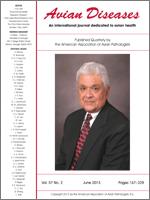We examined the relative effectiveness of two innate immune responses in two species of New World blackbirds (Passeriformes, Icteridae) that differ in resistance to West Nile virus (WNV). We measured degranulation and oxidative burst, two fundamental components of phagocytosis, and we predicted that the functional effectiveness of these innate immune responses would correspond to the species' relative resistance to WNV. The brown-headed cowbird (Molothrus ater), an obligate brood parasite, had previously shown greater resistance to infection with WNV, lower viremia and faster recovery when infected, and lower subsequent antibody titers than the red-winged blackbird (Agelaius phoeniceus), a close relative that is not a brood parasite. We found that cowbird leukocytes were significantly more functionally efficient than those of the blackbird leukocytes and 50% more effective at killing the challenge bacteria. These results suggest that further examination of innate immunity in the cowbird may provide insight into adaptations that underlie its greater resistance to WNV. These results support an eco-immunological interpretation that species like the cowbird, which inhabit ecological niches with heightened exposure to parasites, experience evolutionary selection for more effective immune responses.
Nota de Investigación—Aumento de la respuesta immune inata en tordos cabecicafés, parásitos de la puesta: Degranulación y estallido oxidativo.
Se examinaron la efectividad relativa de dos respuestas inmunes inatas en dos especies de tordos del Nuevo Mundo (Passeriformes, Icteridae), que difieren en la resistencia contra el virus del Nilo Oriental. Se midieron la degranulación y el estallido oxidativo, dos componentes fundamentales de la fagocitosis y se predijo que la efectividad funcional de estas respuestas inmunes inatas corresponde a la resistencia relativa al virus del Nilo Oriental. El tordo cabecicafé (Molothrus ater), un parasito de la puesta obligado, había mostrado una resistencia mayor a la infección por este virus, con una viremia menor y una recuperación más rápida de la infección y la presencia de títulos más bajos en comparación con el tordo sargento (Agelaius phoeniceus), un pariente cercano que no es un parásito de la puesta. Se encontró que los leucocitos fueron más eficientes funcionalmente de manera significativa en comparación con los observados en los tordos sargentos y eran 50% más efectivos para neutralizar las bacterias de desafío. Estos resultados sugieren que un posterior análisis de la inmunidad inata en el tordo cabecicafé puede proveer información sobre las adaptaciones en que se basa su resistencia mayor al virus del Nilo Oriental. Estos resultados apoyan una interpretación ecológica e inmunológica sobre especies como el tordo cabecicafé, que habita en nichos ecológicos con una exposición aumentada a parásitos y que experimenta una selección evolutiva para montar respuestas inmunes más efectivas.





